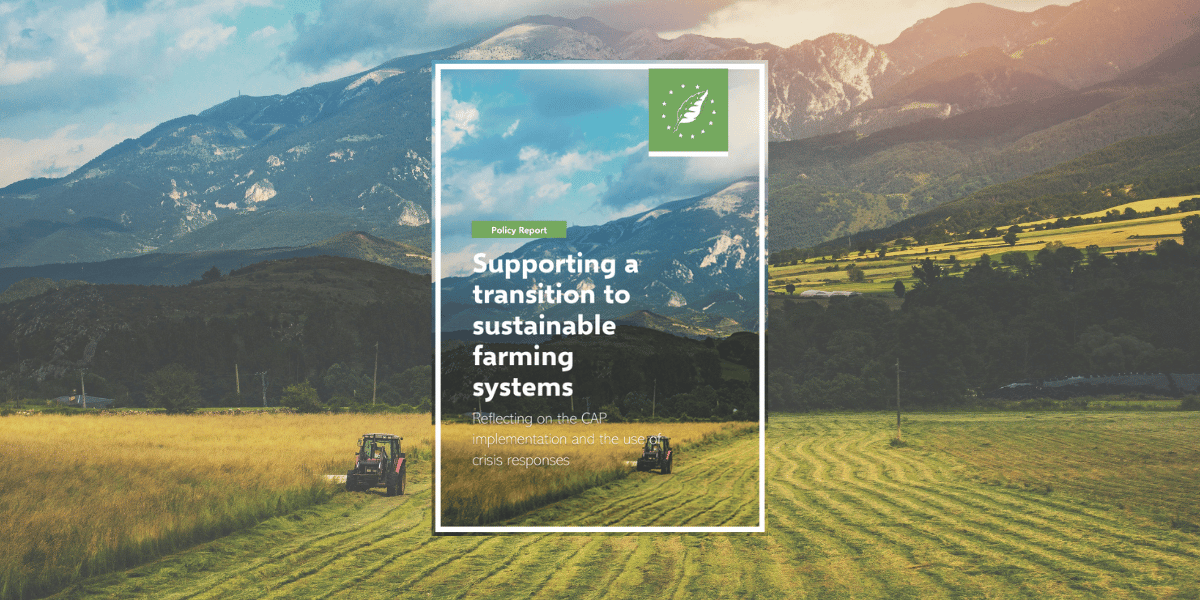AUTHORS: Elisabet Nadeu, Axel Godfroy
With a new European Parliament and a new Commission forming after the EU elections, along with the pertinence of farming issues, this report takes stock of the delivery of the current Common Agriculture Policy (CAP) following its first year of implementation. It reflects on the lessons that can be learned for EU agriculture policy going forward, with a focus on interventions that support sustainable farming practices and the direction of amendments to the CAP Strategic Plans.
The EU agriculture and land use sectors are facing various strategic and interlinking challenges that are triggering increased use of crisis funds under the Common Agriculture Policy (CAP) and State Aid. Climate change is one of the key drivers: heatwaves, droughts, heavy rains and floods have become increasingly regular over the past decade with significant impacts on agricultural production.
In this context, the report seeks to inform the amendment process on the current CAP and debates on the future CAP which will start soon under the new European Parliament and Commission. The report also discusses short-term crisis responses to extreme weather events and reflects upon the need for the new EU administration to define a strategy that aligns both short and long-term support for farmers to increase the sustainability and resilience of EU farming.
The EU must set a clear direction of travel for agriculture, prioritising a shift to sustainable farming practices. Aligning short and long-term support is crucial to provide clarity and stability for farmers, helping them adapt to extreme weather events and enhance environmental performance.
Specifically, the report recommends that:
- Member States make use of amendments to better support farmers’ transition to more sustainable practices;
- Member States and the Commission increase transparency and reporting on the use of “crisis” funds as well as the type of needs they support and their alignment with long-term priorities for EU agriculture;
- The Commission evaluates the consequences of the flexibilities and exemptions derived from the Simplification package on achieving climate, environmental and biodiversity objectives.
Photo by Hert Niks on Unsplash

